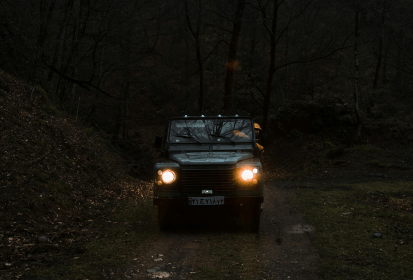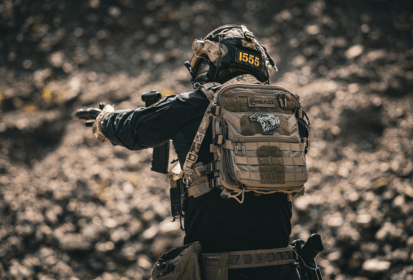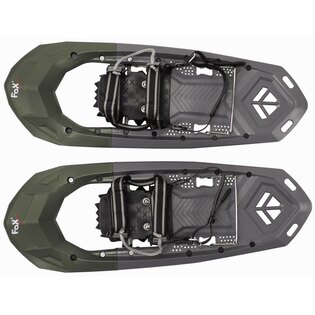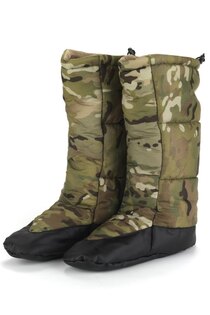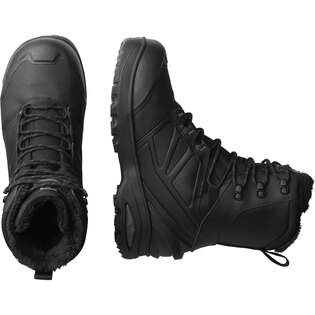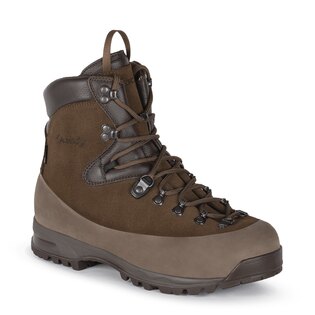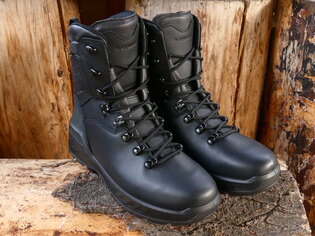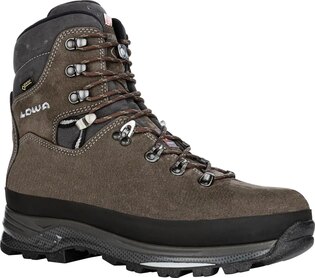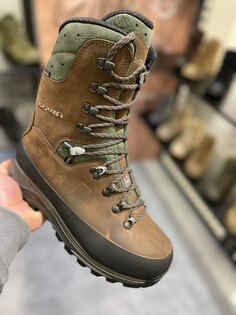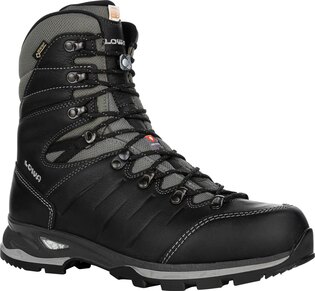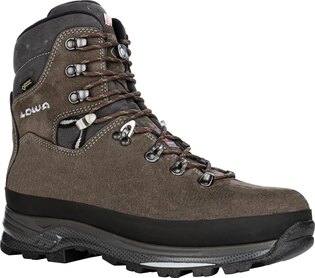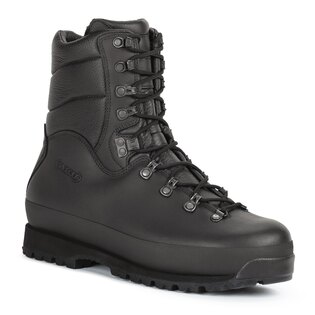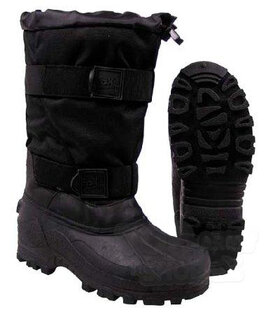Choosing snowshoes and basic movement techniques
Snowshoes are a great tool that allows you to get further in snowy terrain with less effort. In addition, snowshoeing is healthy, so you will also be doing something for yourself. While snowshoes were previously used in the mountains for practical reasons, today they are increasingly popular sports equipment. In this article, we will talk about how to choose snowshoes and what are the basic techniques for moving on snowshoes.
How long has the history of snowshoes been going?
Since time immemorial, snowshoes have been attached directly to footwear and serve as a tool for better weight distribution for their wearer. This makes it easier for the wearer to move even in deep snow. Compared to skis (cross-country skis), they have several advantages. They are more compact and can be used even in terrain where you would have difficulty moving on cross-country skis.
And how long is “since time immemorial”? Archaeologists have found evidence of the use of snowshoes that is more than 6,000 years old. The first snowshoes were an essential tool for hunters and nomads in areas where deep snow was common at the time. When hunting wild animals, falling into the snow could be not only impractical, but also dangerous. Thanks to snowshoes, the hunter could escape to safety at least a little better and faster in case of failure.
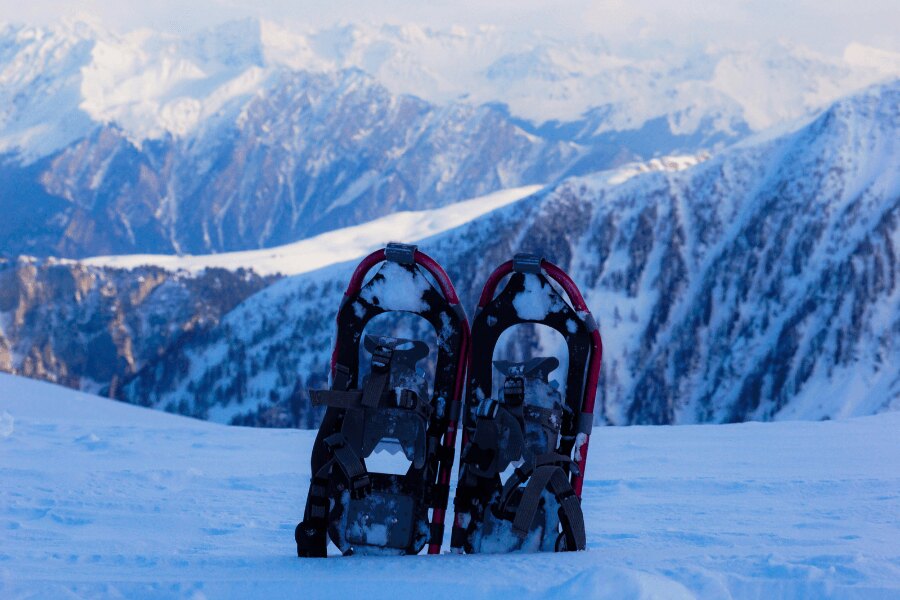
Original snowshoes were made mainly of wood and leather. Today, more advanced materials such as plastics and metals are used.
Those 6,000-year-old finds come from Siberia. However, they were “only” in the form of cave paintings. The oldest preserved snowshoes were found in Scandinavia. Specifically, in the bogs around the Swedish town of Hoting, snowshoes were discovered in 1921, the age of which is estimated to be approximately 4.5 thousand years. And the famous Austrian “ice man” Ötzi was wearing shoes with an enlarged tread at the time of his death, which in principle resembled snowshoes.
The oldest snowshoes were naturally completely different in appearance from modern ones and were also made of other materials. Specifically, the most accessible ones at the time – wood, fabric and leather. Despite their primitive appearance, these snowshoes were highly functional for their purposes. They resembled, for example, a tennis racket with strings. However, there were also snowshoes that were made entirely of wood and served as extended walking surfaces.
In addition to the Far East, present-day northern Russia and Scandinavia, snowshoes were also used quite often in North America, by both Eskimos and Indians. Here too, the purpose was naturally rather practical. And according to some sources, the word Eskimo originally meant “snowshoe maker”. And over time, snowshoes evolved into skis.
A popular accessory for winter hiking
The vast majority of modern types of snowshoes, however, no longer serve their original purpose, but are mainly suitable for hiking and winter sports. There are models designed mainly for those who are going to cross the winter landscape, but also such pieces that will be used by extreme sports enthusiasts, including snowboarders going to places where they have not even heard of ski lifts.
Hikers can use snowshoes anywhere – from the lower limit of even snow cover through the fields and meadows of the highlands to mountainous areas where movement on snowshoes would be difficult due to the rocky surface. Although the snow has rarely held in the lowlands in recent winters, if you go to the mountains at least a few times a winter, snowshoes can definitely come in handy and you can include them in your sports equipment.
How to choose snowshoes?
1) By material
As for materials, wood is rather an exception in snowshoes today and is mainly used for replicas of historical snowshoes of natives. You will encounter it mainly in museums and open-air museums. Today's materials are naturally much more advanced, as are production technologies. Thanks to this, modern snowshoes have been freed from certain "childhood diseases" and are truly a full-fledged tool for moving in snowy nature.
So if you are not going to show your children a historical excursion to the hunter-gatherer era, you basically have two options: either buy all-plastic (polymer/composite) snowshoes, or models with a metal (aluminum) frame.
- Frame snowshoes
Frame snowshoes, of which metal ones are a subgroup, are robust and very easy to repair if something happens to them. They can therefore handle more demanding treatment. In addition to metal, bent wood was traditionally used for the frame of snowshoes, but as we said, this process is not often seen these days.
The frame is covered with fabric, usually some durable synthetic fabric, and these snowshoes also have adjustable straps that make it easy to put them on your feet. Frame snowshoes are relatively lightweight, and pieces with a larger tread area can be used in deeper and softer snow, but also when your weight is increased by a heavy backpack.
- Plastic snowshoes
The second option is plastic snowshoes, which are universal and, thanks to the malleability of polymer and composite materials, designers can "go wild" with them. They are usually slightly smaller than frame snowshoes. The basis is a plastic frame, which can be perforated in various ways so that any accumulated snow can fall freely when your foot moves upwards and does not burden you while moving.
The bindings on plastic snowshoes are really sophisticated and comparable to modern skis, and these snowshoes sometimes also include metal or plastic spikes (teeth) on the underside, which ensure the right grip on the ice.
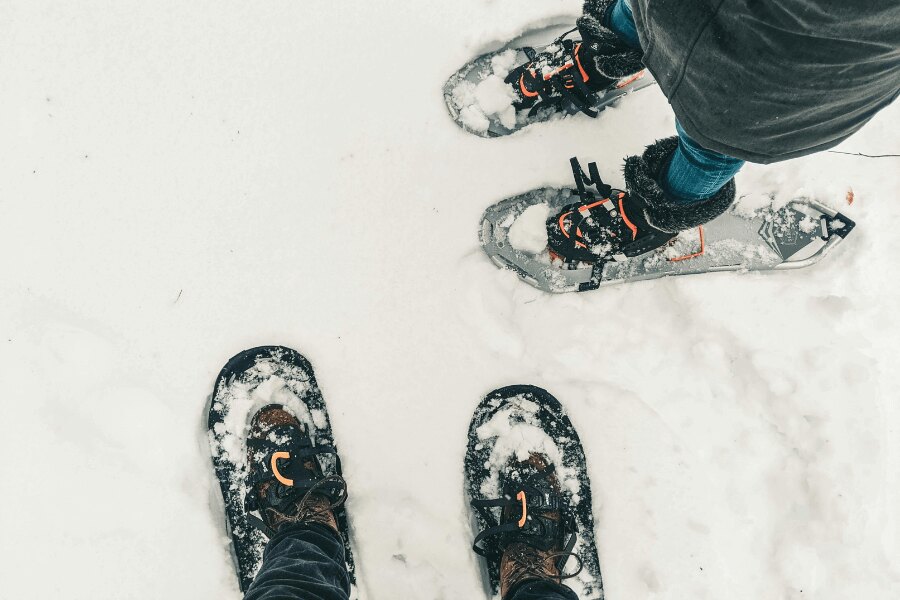
There are snowshoe models designed mainly for hiking, but there are also types that are used by extreme sports enthusiasts, including snowboarders going to places where they have never even heard of ski lifts.
2) By functions and parameters
- Load capacity
In addition to the material, we could add various functions and parameters as a factor in choosing snowshoes. When choosing snowshoes, focus first on the stated load capacity. But it is not enough to just step on the scale before buying. You also have to take into account the weight of your backpack and your clothing, which will probably consist of several layers in winter. And even winter outdoor boots are not the lightest.
- Bindings
Be sure to also focus on the bindings. In cheaper snowshoes, you will come across various adjustable straps and belts, but the disadvantage here is that it is relatively difficult to put on and take off the snowshoes and also in the generally lower service life of this type of binding. On the other hand, in case of damage, it is not a problem to replace it and thus repair the snowshoes.
You will encounter more advanced, but also more expensive bindings in plastic snowshoes, into which you attach your boot similar to skis. Various ratchets and quick-release systems are available that make it easier to manipulate the bindings. Modern snowshoes are equipped with a locking system that allows you to adapt a specific model to the size of your foot.
The binding may include a support under the heel – a heel lift or heel counter – which makes it easier to move on snowshoes uphill. On the other hand, when walking in flat terrain, it is advisable to have a loose heel so that you do not have to step in deep snow with your knees raised high and unnecessarily exhaust yourself. You only lift your legs slightly with each step, almost like when walking on cross-country skis.
- Bottom surface of snowshoes
And finally, focus on the bottom surface of snowshoes, which can be completely flat, but also equipped with "claws", whether metal or plastic. Such a solution is ideal for walking on frozen snow, or when moving uphill.
- Additional equipment
In addition to snowshoes, you should also think about other, "additional" equipment. The basis is naturally high-quality, sturdy boots that hold better in the bindings and, most importantly, you won't be cold in them in winter. Shin guards will also come in handy. And then also ski or hiking poles, which really make moving in snowshoes easier. The advantage of modern snowshoes is the fact that they are lightweight and compact, so when you move from a snowy area to the lowlands, you can easily attach them to your backpack.
3) By type
In addition to the above division, there are other ways to navigate the snowshoe market. Basically, we divide snowshoes into men's, women's and children's. They differ in load capacity. And also in the tread area. And then there is the purpose of the snowshoes. The basic ones are suitable mainly for recreational purposes. Mountaineering snowshoes have improved "claws" and are therefore also suitable for moving uphill. And finally, racing snowshoes. Yes, official competitions are also held in snowshoe running.
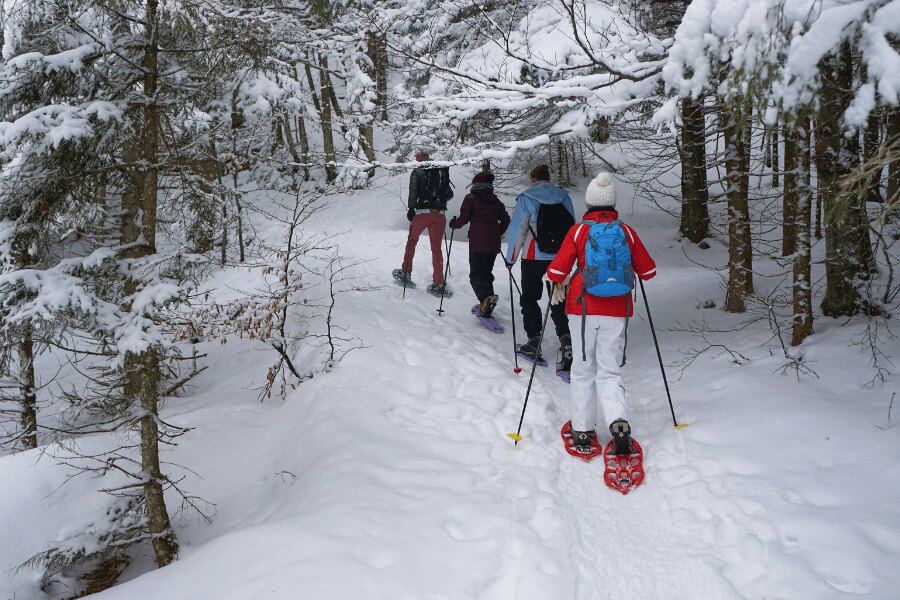
After choosing specific snowshoes, test walking only on short routes and gradually increase the kilometers.
Snowshoeing techniques
Snowshoeing is a strain on all joints of the legs. We note that it is a healthy strain, but you need to get used to it gradually. Due to civilization habits – especially frequent sitting (at the computer) – our legs are used to a rather unhealthy strain. If you do not move and stretch regularly during the day, it is quite likely that you have shortened tendons.
Therefore, after choosing specific snowshoes, test walking only on short routes and gradually increase the kilometers. Walking ten kilometers on snowshoes at once is really unsuitable for untrained legs and can even lead to muscle fever or similar discomfort. Before each training session, and for that reason, even before a shorter training session, stretch your tendons and muscles, similar to how you stretch before exercising, whether at home or in the gym.
Regardless of the terrain you will be walking on, do not forget about the correct technique for using poles. This is roughly the same as for Nordic walking, i.e. always keep your torso upright and adjust the height of the poles for walking on level ground so that your elbows are at a right angle. The correct technique reduces fatigue and the likelihood of injury. Choose telescopic hiking poles, which can be adjusted in different ways for different terrain profiles.
Techniques for walking on the flat ground
A flat ground (or at least an approximate flat ground) will probably be the basic terrain you will be walking on. Keep your legs slightly apart when moving so that you do not step on one snowshoe with the other unnecessarily. Not only could you lose stability, but you could also shorten the life of your snowshoes this way. As soon as your hips or knees start to hurt while walking, it is better to stop training and return to it when you have rested. Save ridge crossings for another time.
For beginners, slightly narrower snowshoe models are more suitable, as they do not have such a large footprint, but on the other hand, you will get used to a wider walking with them more easily. Initially, train on a paved, albeit snowy surface, for example on a sidewalk. Try looser terrain once you have experienced the technique of walking on snowshoes. Additionally, use your knee joint rather than your instep when moving, your joints will thank you.
Climbing techniques
The basic climbing technique is the so-called fishbone, which we also use when walking on cross-country skis or even sometimes when moving from the ski lift on the slopes. We will walk on snowshoes using the fishbone technique especially on sections with steeper climbs. When climbing, shorten your telescopic poles if possible so that you do not have to walk with your hands too high and you can keep your elbow at a right angle in the basic position. Of course, this does not matter on shorter sections, but you would get tired after a hundred meters with the wrong length of poles.
According to available data, sports, plastic snowshoes can be comfortably used for climbs up to slightly above 30°. If the snow is hard, use the so-called step technique instead of the fishbone technique, where you "kick" a step into the slope with your toe with each step. If you are walking in a group, it is enough if only the group leader takes the steps and the others can use the steps after them. It's much more comfortable than trying to move in the fishbone technique in hard-packed snow.
If the climb is really steep, you can place the heel lift that you would normally lean on under your heel, which means that an angle is created between the body of the snowshoe and the binding (foot). So your feet will be almost straight even when you're going uphill.
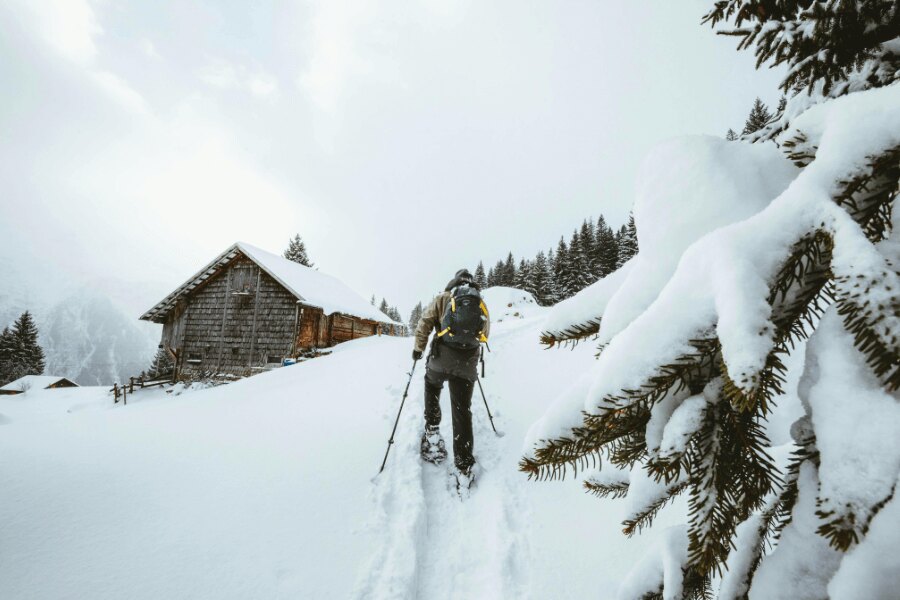
If the snow is hard, use a so-called step technique instead of a tree, where you "kick" a step into the slope with your toe with each step.
Downhill walking techniques
When walking downhill on snowshoes, telescopic poles will help us significantly, which we can adjust to a longer length. If you are sure that you will not slide further, you can jump down from smaller hills rather than sliding down. Moving downhill on snowshoes is unnatural and demanding and can be a real burden on your knees. Therefore, on longer and steeper descents, we recommend you to hang the snowshoes on your backpack and move only using hiking poles.
However, if the snow is falling a lot and you still have a long way to go down, then we recommend the so-called slalom or crossing. This type of walking consists of moving alternately diagonally to the left and right until you encounter a terrain profile more suitable for another type of walking.
For cross-country skiing, however, it is necessary to have the bottom of your snowshoes equipped with spikes. It is also advisable to have other than basic strap bindings, as this can cause your foot to turn to the side. If you are going to walk downhill often, then we recommend investing in more expensive and advanced snowshoes.
Conclusion
Snowshoes have recently become an increasingly popular way to move around in snowy terrain. If you learn to walk on them correctly, they are a healthy way to move. The choice of snowshoes largely depends on the activities you plan to do with them, as well as their frequency. Compared to cross-country skis, snowshoes are more compact, so when you reach the end of a continuous snow cover or a too steep hill, you can simply attach them to your backpack.
Although the original snowshoes were wooden, today you will mainly encounter plastic models and those with a metal frame. The choice is truly wide today. We believe that this article helped you at least a little to navigate the market and maybe even inspired you to buy snowshoes or use them more often if you already have them at home.
Readers are further interested
